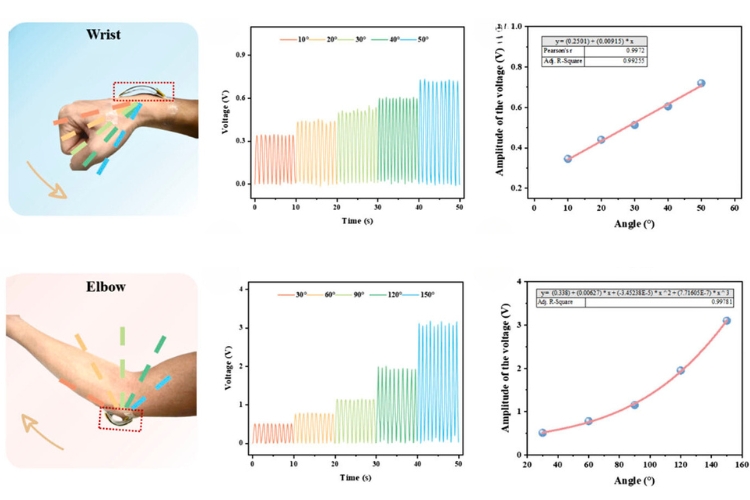
Researchers have developed a Flexible arch-shaped triboelectric sensor (FA-Sensor) designed for advanced movement monitoring in badminton. This innovative sensor overcomes the drawbacks of traditional methods, which often involve extensive setup and high power consumption. Using 3D printing technology, the FA-Sensor integrates neural network algorithms for precise real-time data analysis and feedback, allowing it to monitor bending and twisting motions with high sensitivity and comfort. Below, you can see an image representing the movement of the wrist and elbow with its relative voltage and frequency output.

The FA-Sensor is effective across a broad range of angles, from 10° to 150° for bending and 20° to 100° for twisting, providing accurate measurements with minimal discomfort. Combined with a signal acquisition module and a master computer, this system achieves a remarkable 97.2% accuracy in identifying common badminton movements. Unlike traditional video analysis and wearable sensors, which can be cumbersome or energy-intensive, the FA-Sensor offers a practical, low-power solution for detailed sports monitoring. This advancement could significantly enhance performance tracking and data analysis in badminton and potentially other sports.
In summary, the flexible arch-shaped triboelectric sensor (FA-Sensor) represents a significant leap forward in sports monitoring technology. Its advanced design, coupled with real-time data analysis, offers an efficient and comfortable solution for tracking complex movements in badminton. By overcoming the limitations of traditional methods, the FA-Sensor paves the way for enhanced performance analysis and could set a new standard for wearable sports technology.

